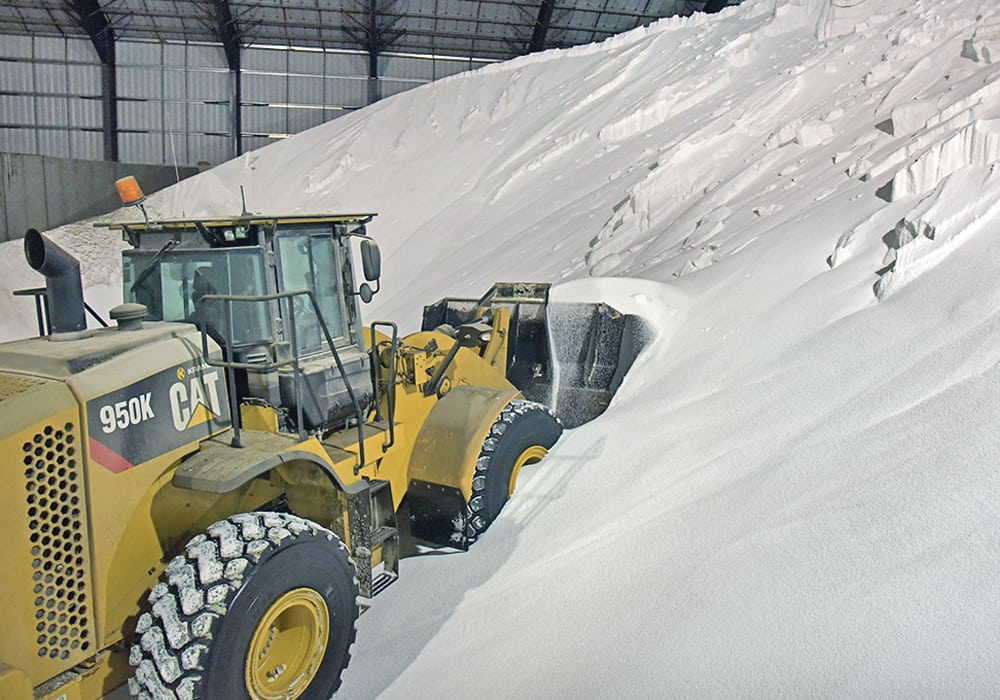Correction catches observers off guard, pointing to the possible start of a softening trend as EU natural gas prices ease
Fertilizer markets appear to have reached a tipping point, says an industry analyst.
Urea prices in the United States careened lower in the first week of January and it is now the cheapest nitrogen fertilizer product in that market.
The sudden correction that caught many off guard appears to be the first sign of a softening fertilizer market, said Connar Hyde, editor of Argus Media’s North American Fertilizer service.
“The U.S. market could be the leader of the 2022 market reset that many anticipated to start in the second half of 2022,” he said during a recent webinar.
Read Also

Feds propose overhaul of chronic wasting disease control program
Chronic Wasting disease control program getting updated by Canadian Food Inspection Agency with feedback encouraged from producers.
Hyde believes the U.S. could be the “canary in the mine” for world nitrogen fertilizer prices.
Offshore imports of urea have outpaced the previous five-year average since July. The U.S. imported 1.4 million tonnes in October and November, which is typically a low volume period.
Urea is now less expensive than ammonia, which is usually the cheapest form of nitrogen fertilizer. That will likely put downward pressure on ammonia values.
Urea prices remain elevated compared to corn values and the fertilizer affordability index is still at multi-year lows.
But that doesn’t mean growing corn is unprofitable. The break-even price for corn is US$4 per bu., while new crop corn prices averaged $5.39 per bu. through the first half of 2021-22, said Hyde.
There are also other signs that urea prices may have peaked and are on their way down. European natural gas prices have been easing from the highs set in 2021 and there are excess urea supplies building in the Middle East and Egypt.
UAN may be the one exception in the nitrogen fertilizer market because supplies have been threatened by looming U.S. tariffs on product from Russia and Trinidad.
Imports from those two countries have plummeted, which is sustaining the already prolonged tightness in supply and will likely support prices well into 2022.
Hyde said nitrogen fertilizer demand is going to stay strong due to an anticipated increase in U.S. corn acres this spring.
Jasmine Davis, reporter for Argus Media’s North American Fertilizer service, said that is not the case for phosphate and potash, where high prices are expected to weigh on spring application rates of those two macronutrients.
Farmers will prioritize near normal application rates of nitrogen at the expense of phosphate and potash, especially following two consecutive strong application seasons for the two fertilizers.
Farmer purchases of phosphate during December and early January have been lower than previous years.
“Hand-to-mouth purchasing, allowing buyers to minimize forward price risk, is expected to persist in the near-term,” she said.
On the supply side, phosphate imports have been stronger than anticipated despite U.S. tariffs on product from Russia and Morocco, and export restrictions in Russia and China.
In fact, imports are outpacing previous seasons due to a late-season influx of product from markets like Australia and Mexico. That has minimized the near-term supply concerns that fueled rapid price appreciation in the fall.
Davis said U.S. sellers who are sitting on supplies of phosphate may have to lower prices to stimulate demand and avoid carrying costs.
In the case of potash, U.S. sanctions against Belarus disrupted imports from that important supplier, leading to a rapid increase in prices in the first half of 2021.
Belarusian Potash, a company that supplies about one-third of those imports, was initially exempt from the sanctions but that changed in December.
However, the U.S. is giving the company a window to ship product through April 2022, which means the huge tonnage shock many were anticipating will be delayed until after spring planting.
Increased imports from Canada are also helping to offset the loss of product from Belarus.
















